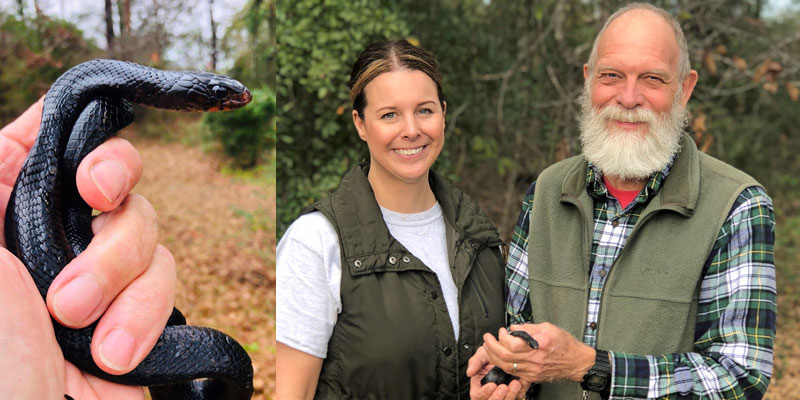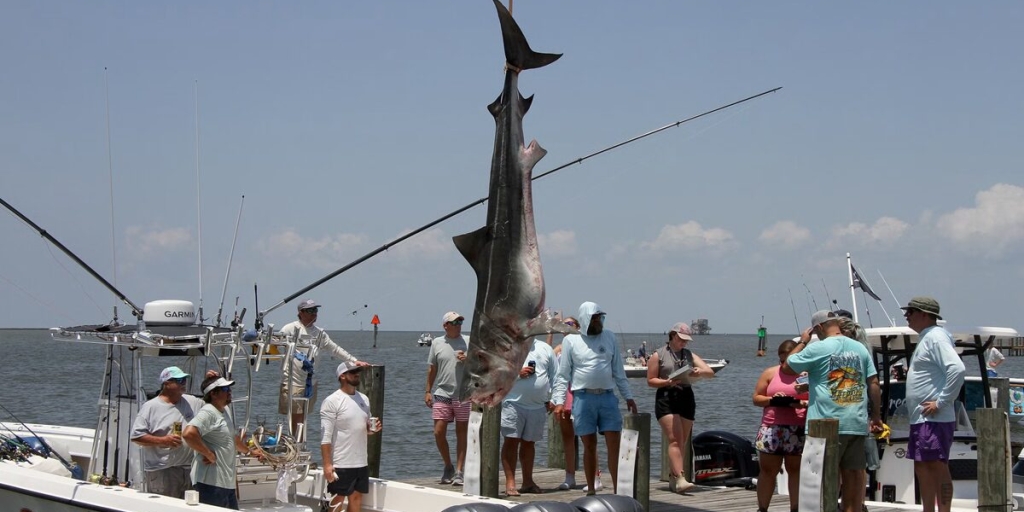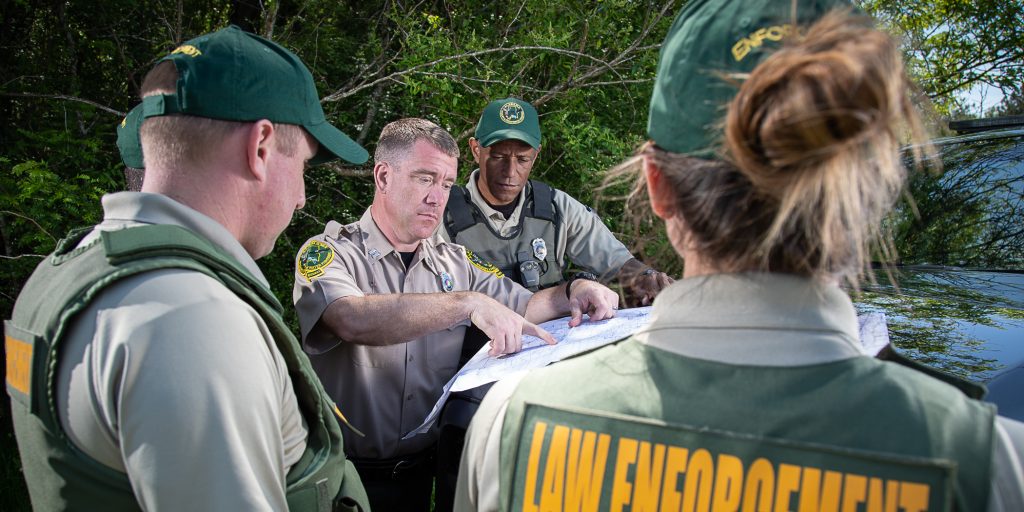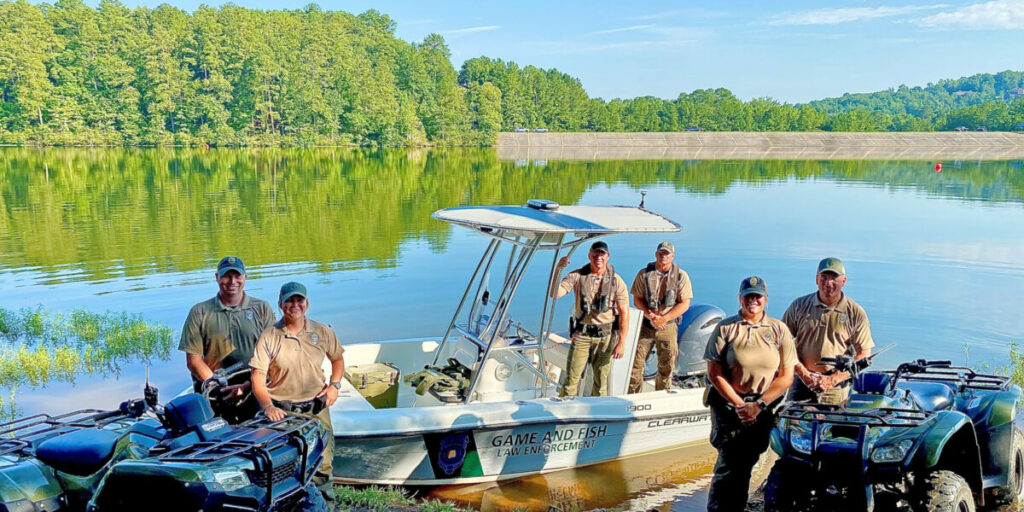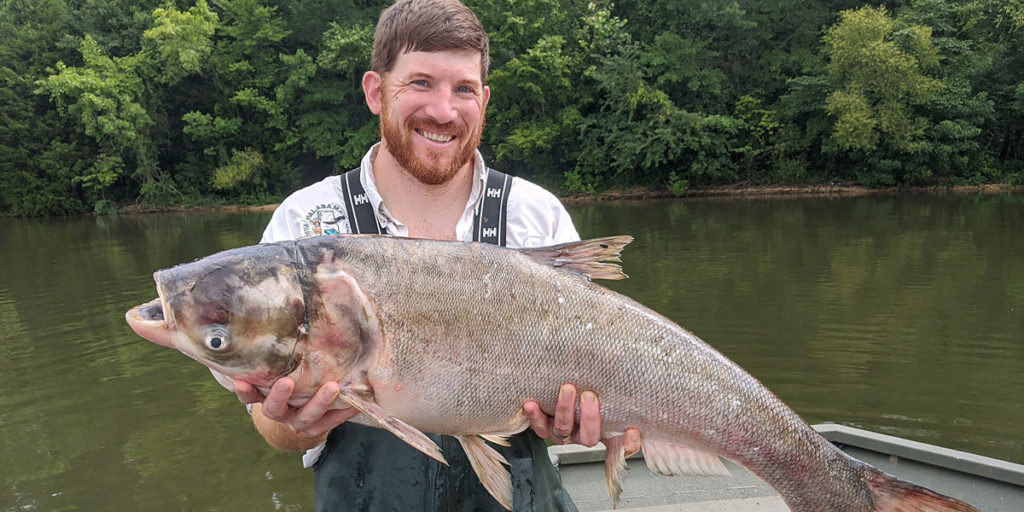Traci Wood admitted holding the snake almost made her come unglued. No, she wasn’t afraid of the snake she was holding. It was the magnitude of the moment.
Wood, the Habitat and Species Conservation Coordinator with the Alabama Wildlife and Freshwater Fisheries (WFF) Division, had in her hands the first wild Eastern indigo snake documented in Alabama in more than 60 years.
“I’m not embarrassed to say that I was shaking when I held that animal,” Wood said. “This is a monumental benchmark in conservation for Alabama and the southeast region for this species. It’s a big deal, extremely big. It’s big for recovery efforts of a federally listed threatened species. It’s the first documentation of a wild snake in more than 60 years in Alabama. It’s proof that what we are doing through reintroduction is working and that captive snakes are acting like wild snakes after they are released.”
Chris Blankenship, commissioner of the Alabama Department of Conservation and Natural Resources echoed the importance of the achievement.
“I am thrilled that we have documented wild reproduction of the Eastern indigo,” Commissioner Blankenship said. “It is great for the species, but I am also really happy for Traci and the staff who have worked for years to make this happen. They truly have a passion for their work, and I am so thankful for them.”
Technicians from the Auburn School of Forestry and Wildlife Sciences and the Auburn Museum of Natural History were out looking for documentation of indigo snakes as part of the long-term program to re-establish viable populations of Eastern indigos in their native habitat, mainly in longleaf pine forests in central and south Alabama.
“We try to document how long they are living, how far they are moving and how they’re doing healthwise,” Wood said. “The technicians were out and came across the snake as part of the monitoring effort. It was really no different than the monitoring we do for the released snakes. We’re out there assessing and trying to document their survival. There’s always the hope that we will find documentation of reproduction, and it finally happened.”
Wood said the technicians knew immediately what they had discovered when the snake was picked up.
“They knew because it was a hatchling-size snake,” she said. “It measured 2 feet in length, which is much smaller than the snakes we release from OCIC (Orianne Center for Indigo Conservation). It had no PIT (passive integrated transponder) tag or any indication we use in monitoring to indicate it was a released snake. Those released snakes are 5 feet in length or longer. They estimated the juvenile indigo at about 7 months old. It probably hatched in July or August.”
The Eastern indigo project started in 2006, and the program was able to start releasing captive-raised indigos in 2010 with 17 adult snakes released into the Conecuh National Forest. The goal is to release a total of 300 snakes to improve the chances of establishing a viable population. The project team has released 170 snakes to date. Wood said the decision-making and planning for indigo recovery through reintroductions started with late Auburn University professor Dr. Dan Speake in the 1970s and 1980s.
“It’s been a long process with a lot of sweat,” Wood said. “We have faced some criticism along the way. Then, when what you have hoped for happens, it’s extremely rewarding and overwhelming.”
During the early days of the indigo project, the released snakes were propagated from indigos that had been captured in the wild in Georgia. Partners in this project include Auburn Museum of Natural History, Auburn School of Forestry and Wildlife Sciences, U.S. Forest Service, U.S. Fish and Wildlife Service, Zoo Tampa, Zoo Atlanta, the Georgia Department of Natural Resources and the U.S. Army’s Fort Stewart, as well as the OCIC at the Central Florida Zoo, where the captive indigo breeding and health care are handled.
“We’re kind of at the halfway mark in the reintroduction,” Wood said. “It’s very exciting to see verification of reproduction at this stage of the project. It’s a huge testimony to the State Wildlife Grants program and working toward the recovery of a federally listed species. It is considered an experimental population. We were conducting research and making decisions that had never been done before with this species. It was a lot of groundbreaking work. Florida now has a reintroduction program, and a lot of their work is based on what we’ve done at Conecuh and lessons learned at Conecuh. Besides aquatic species, there isn’t another example of species recovery of a federally listed species through reintroductions.”
Wood said the lessons included that a learning curve is a given with a project of this magnitude and that 2-year-old snakes have a better chance of survival in the wild because they are less susceptible to predators.
“We also learned the target for the number of individuals to be released,” she said. “That is 30 individuals per year. We’ve learned that we had to establish a monitoring program that didn’t exist before. We learned it takes intense monitoring on the ground.”
One of the tools the monitoring team borrowed from the hunting community is the game camera. The game cameras have been stationed to monitor activity at gopher tortoise burrows, which are utilized by a number of animals, including indigos.
“We had to learn that a snake is not going to trigger motion sensitivity on the game cameras,” Wood said. “We set the cameras to capture a photo at intervals of 30 to 60 seconds to make sure we capture all the activity. That’s something we’ve recently started, and so far it’s proven to be very helpful. We’ve captured pictures of several indigos at burrows. The cameras are showing location, where they’re hanging out, how they’re using burrows and the fact adult snakes are surviving. We estimate that 60 to 80 percent of the snakes that we reintroduce will survive. That’s not bad at all after they’ve been in captivity for two years.”
Wood said it is not possible right now to estimate the total number of Eastern indigo snakes that are in the Conecuh habitat.
“These recaptures and verification of reproduction is data that will be useful in the future so that someday we may be able to predict how many individuals may be in the wild,” she said.
Wood said Eastern indigos were extirpated from the state and hadn’t been seen since the 1950s. Considered an apex predator, the snake plays an important role in the longleaf pine ecosystem. Eastern indigo snakes are the longest snakes native to the U.S. at more than 8 feet long. They prey on a variety of small mammals, amphibians, lizards and numerous species of venomous snakes, including the copperhead. Indigos are known to range far and wide during the warmer months and then seek refuge in the gopher tortoise burrows during the winter.
WFF’s State Wildlife Action Plan identifies 366 species that are in the category of greatest conservation need, according to Wood.
“Alabama is one of the most diverse states in the nation in terms of amphibians and reptiles,” she said. “Conecuh National Forest is the most biologically rich public land in the country.”
Wood is still having a little trouble grasping what happened recently at Conecuh National Forest.
“Physically holding a wild species that hasn’t been documented in Alabama in more than 60 years gives us high hopes for what we may see when we reach our goal of 300 snakes released,” she said.
David Rainer is an award-winning writer who has covered Alabama’s great outdoors for 25 years. The former outdoors editor at the Mobile Press-Register, he writes for Outdoor Alabama, the website of the Alabama Department of Conservation and Natural Resources.




